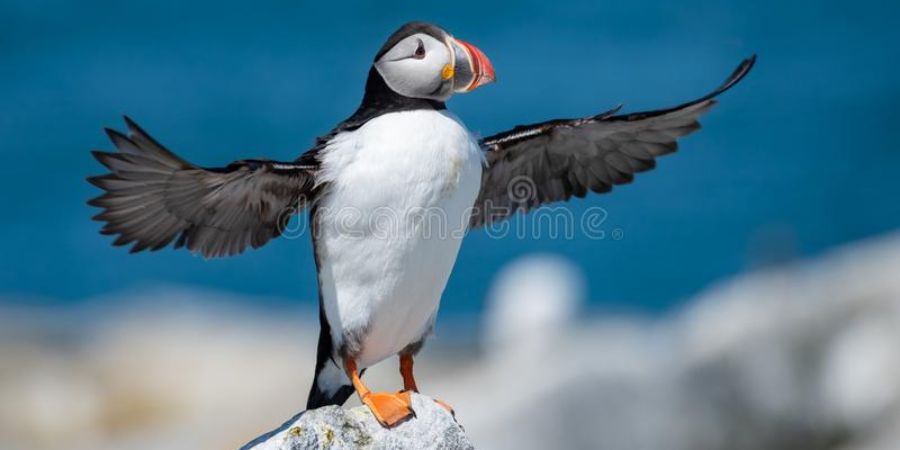

puffin (Fratercula arctica), also known as the common puffin, is a species of seabird in the razorbill family. It is the only puffin native to the Atlantic Ocean; two related species, the tufted puffin and the horned puffin, are found in the northeastern Pacific. The puffin breeds in Russia, Iceland, Norway, Greenland, Newfoundland and Labrador, Nova Scotia and the Faroe Islands and as far west as Maine and France to the east. It is most commonly found
in the Westman Islands, Iceland. On land, it has the typical upright posture of an auk.In the sea, it swims on the surface and feeds on small fish, crabs, etc., which it catches by diving under water and propelling itself with its wings. Puffin
has a black crown and back, light gray cheek patches, and a white body and underparts. Its broad beak, distinctly red and black, and its orange legs contrast with its plumage. It is one of the most beautiful animals in the world
The puffin spends the autumn and winter in the open ocean of the cold northern seas, returning to the coastal areas in late spring when the breeding season begins. It nests in colonies on cliffs, digging a burrow in which to lay a single white egg.The chicks feed mainly on whole fish and grow rapidly. After about 6 weeks they are fully grown and go out to sea at night.
Behavior
Like many seabirds, the puffin spends most of the year offshore in the open ocean, only visiting coastal areas to breed. It is a gregarious bird and typically breeds in large colonies.[24]
Diet
The puffin's diet consists almost entirely of fish, although examination of its stomach contents shows that it occasionally eats shrimp, other crustaceans, molluscs and polychaete worms, particularly in coastal waters.[26] When fishing, it swims underwater, using its half-extended wings as oars to "fly" through the water and its legs as oars. It swims quickly and can reach considerable depths, staying submerged for up to a minute. It can eat flat-bodied fish up to 18
cm (7 in), but its prey are usually smaller fish, around 7 cm (3 in). An adult bird needs about 40 of these per day: sandeels, herring, sprats and capelin are eaten the most. It fishes on sight and can swallow small fish underwater, but larger specimens are brought to the surface. It can catch several small fish in a single dive, holding the first in its beak with its muscular, ridged tongue while catching the others.The two jaws are hinged at
so that they can be held parallel to hold a number of fish in place, and are also held in place by inward-pointing serrated teeth on the edges of the beak. It deals with excess salt by partially swallowing it through its kidneys and partially excreting it through specialized salt glands in its nostrils.




